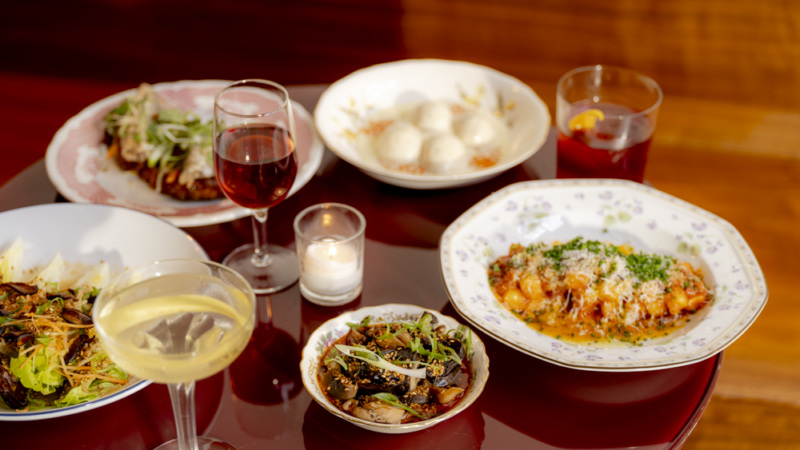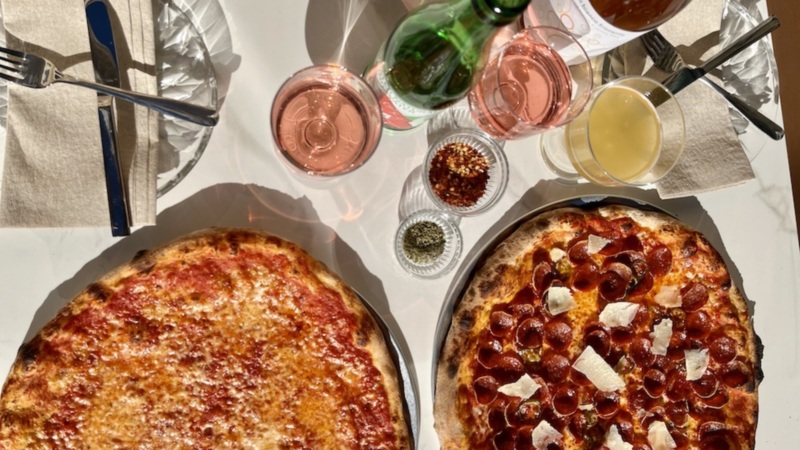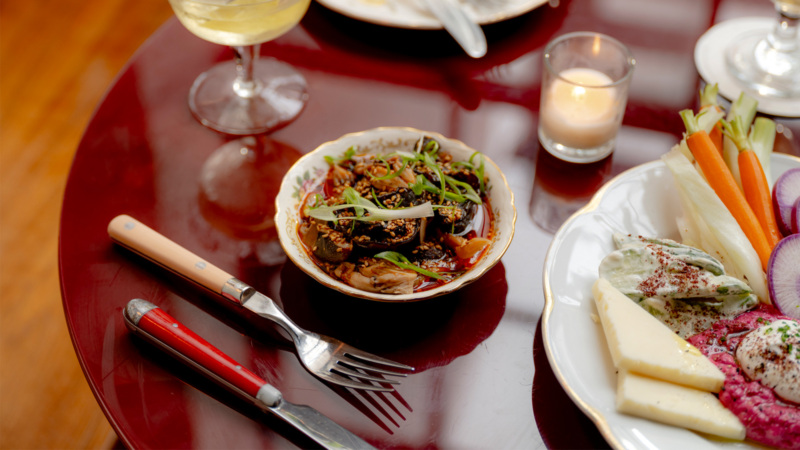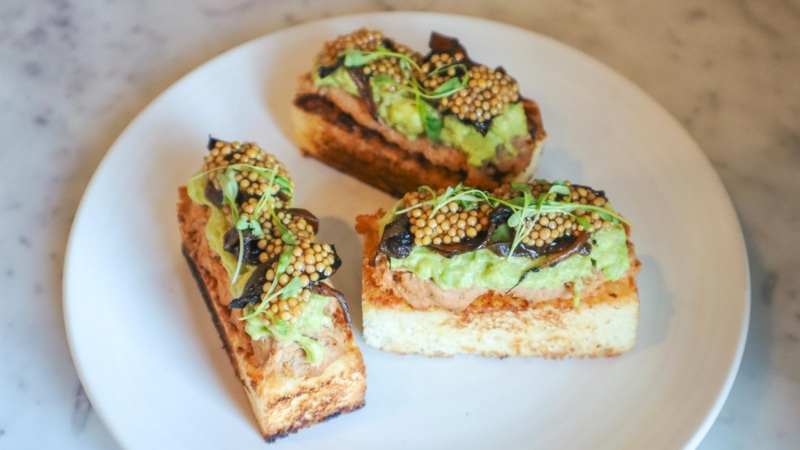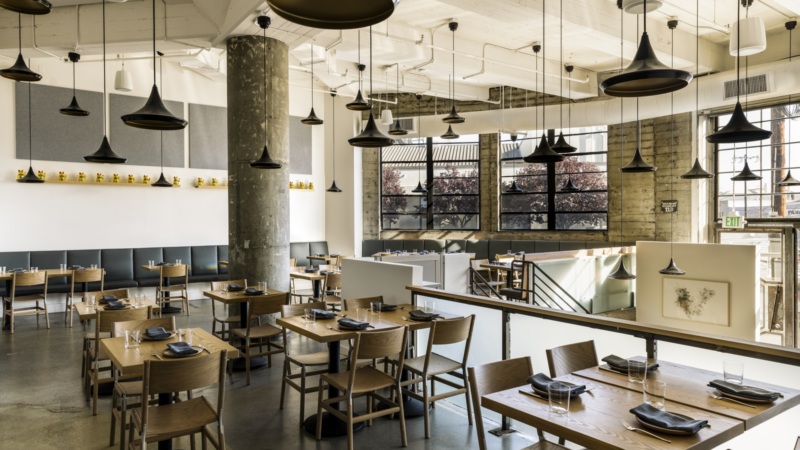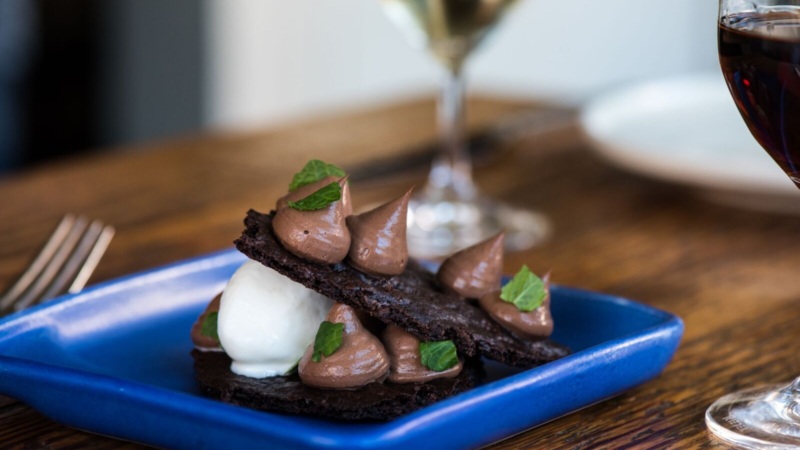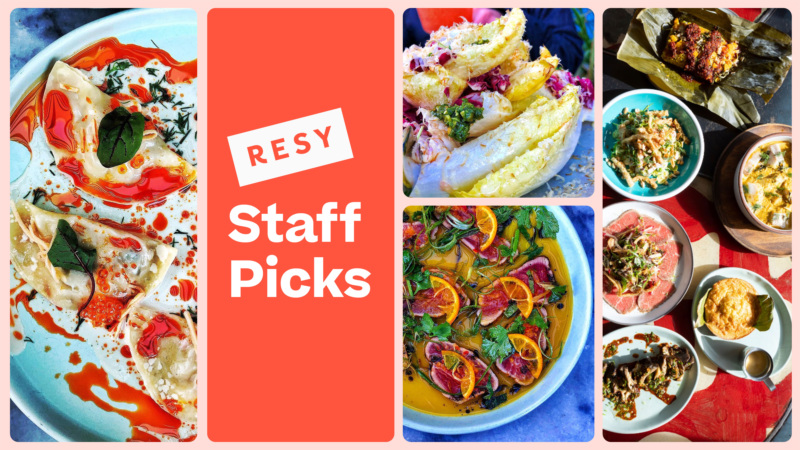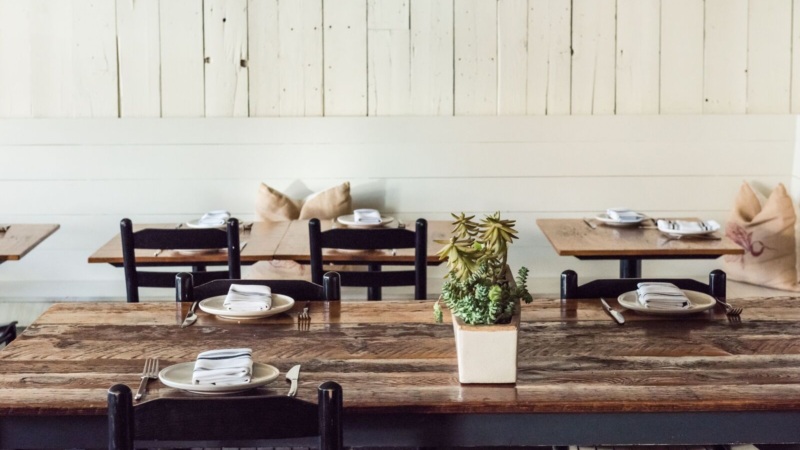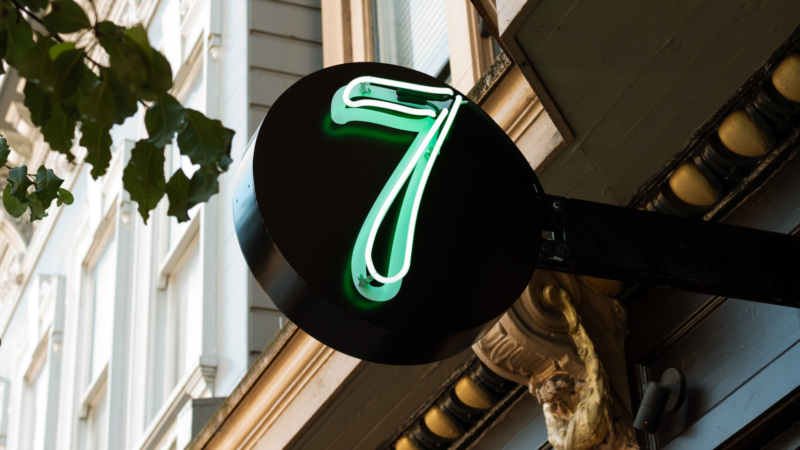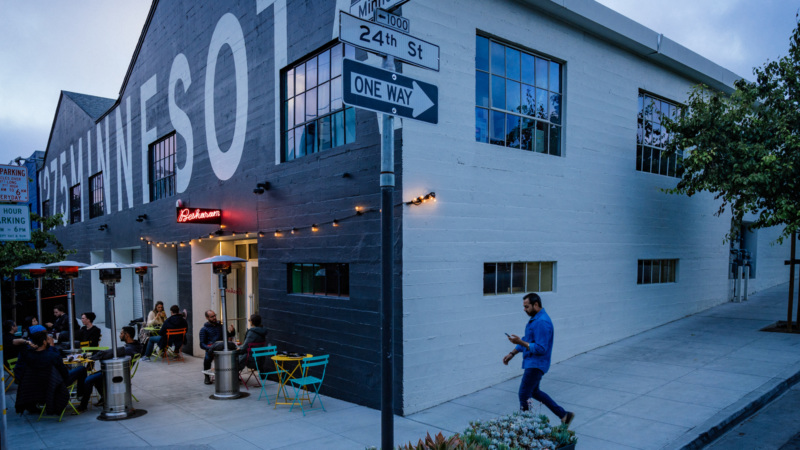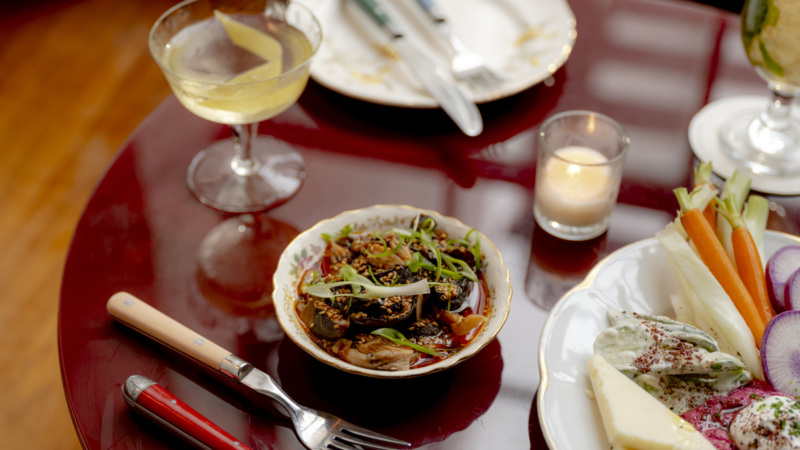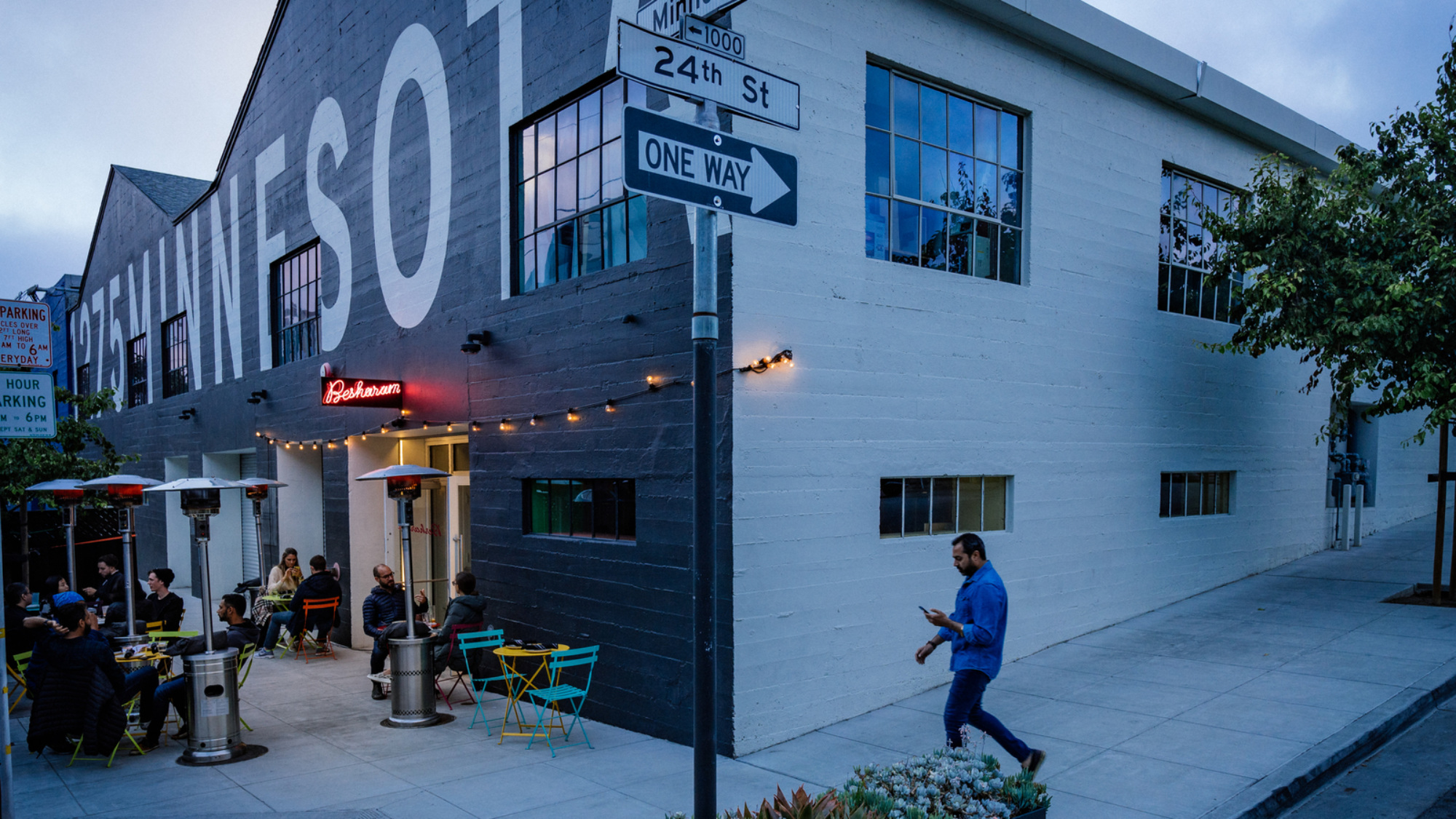
Heena Patel Speaks About Besharam’s Beautiful Evolution: ‘I’m Writing My Own Story’
The award-winning Besharam is chef-owner Heena Patel’s restaurant located in San Francisco’s Dogpatch neighborhood. The space and place is deeply personal, celebrating Patel’s Indian heritage while offering diners a deep-dive into regional Gujarati cooking and cuisine.
“Regional Gujarati food is so rich and diverse, from city to city, but also from block to block,” says Patel. “Each household makes their own version of dishes, and they’re so proud.”
We sat down with Patel to catch up — and learn more about her and her stellar restaurant’s continued evolution.
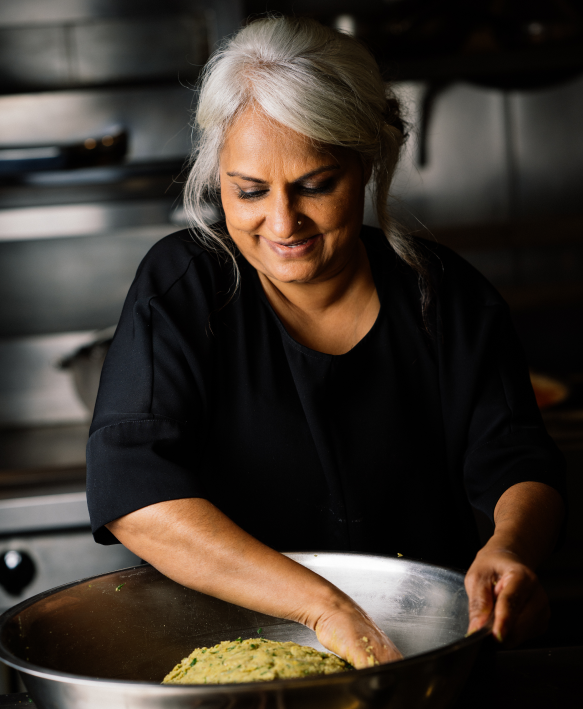

Resy: Are you at the restaurant most days of the week?
Heena Patel: I take one day off, but I’m there everyday. We’re open five days, Wednesday through Sunday. On Tuesday, I do prep for the week, because I need to prep the sauces on a day off.
What’s it like to work so much?
I’m 56. I was born in 1965, so I will turn 57 this year. Some days I feel more pain than others, but I’m doing this because I want to. And this is the first time I’m doing what I want to do. I’m writing my own story in a way. This is the most exciting time in my whole life; it doesn’t feel like my work. It feels like an extension. Working with Paresh, my husband, who’s managing the front of house. Working with my children, who are doing social media. It’s a mindset; it doesn’t feel like work.
Of course some days my legs tell me I want to sit down. But I have an amazing team and a strong team. And I realized without the team I can’t run the restaurant on my own.
I’m writing my own story in a way. This is the most exciting time in my whole life; it doesn’t feel like my work.— Heena Patel
How is it working with Paresh? How long have you two been married?
Since I came here in 1992, we’ve been working. We owned businesses together: a flower shop and a liquor store. Working with him? I don’t know any other way. Because we know each other so well — he knows what I like, what I don’t like. I have worked with other managers, and it was more stressful than working with Paresh.
It’s easier with Paresh, but of course every day is not the same. We have our own approaches, like with any other business partner, and it’s smooth. But you will see the rolling eyes.
How’s the restaurant going? It’s now more than four years old.
The restaurant is doing well. Since we reopened last year, I’ve flipped the menu all the way vegetarian. It’s like turning the page — it’s very exciting.
What made you flip the restaurant full vegetarian?
During COVID, we all had a time to pause, and I realized that, being a chef and having a culinary journey, it took me a while to build confidence within myself. I wanted to put Gujarati food on the map. And so looking inwards, it was natural to me. I’m vegetarian. And now there’s confidence is in my food. I’m more powerful with what I’m serving. The story conveys without any filter.
The Resy Cheat Sheet
Heena Patel’s Perfect Meal for Two at Besharam
-
Kala Khatta Soda
“A fruit juice drink I remember having with my dad, a black soda of sorts. We use pomegranate juice and black salt.” -
Pani Puri
-
Mango Salad + Patras
“The mango salad with the sesame chikki has sweetness and umami with white miso dressing, and the combination with the patras is a good starter.”
-
Pav Bhaji Puff
“It takes you to the streets of Mumbai. If you haven’t had it, just know this is the best version of the sandwich. -
Maska Paneer
-
Pickles + Garlic Naan
“My version is topped with pine nuts, mozzarella and sunflower seeds.” -
+ Shrikhand Cheesecake
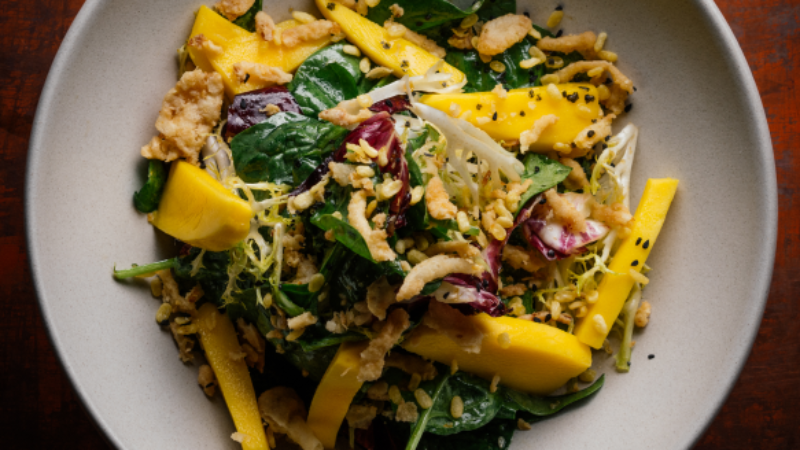
You also divided the menu by cities in India. Tell us more about each section and what that means to you.
As a child, we’d go to different cities just to eat food. We know cities through the food we enjoy.
Ahmedabad is one of the biggest cities in Gujarat. My aunt used to live in Ahmedabad, and now my mom and dad live there. Whenever we go back to India, our first stop is in Ahmedebad. Ahmedabad is so hot, and in the hot days, people use the sunlight to make a rice cracker out of khichu, a spiced rice dough. I have that memory of walking down the street, and seeing all the saris in the sunlight on the street as the rice crackers are drying in the sun.
Vadodara is maybe 70 miles away from Amedabad, a two-hour car ride or train ride. It’s close and nearby. But the culinary lineage in Vadodara more celebrates food on the street.
You can find kachori all over Gujarat, but as a child, the best ones came from Vadodara. It’s similar to a samosa — you could find it stuffed with lentils or potato. I wanted to highlight radish, so ours is stuffed with that.
I remember eating undhiyu — which I have on the menu right now — it means upside-down. It’s cooked in a claypot, and the original version has spiced vegetables, cooked underground, that you eat with chutneys, and daal. I love this dish because it has so many layers of flavor. The vegetables I use are sweet plantain, eggplant, fingerling potatoes, and zucchini in the summer. But cooking them with lime and coconut, you get a fragrant sauce. That dish—you get the smell and aroma – before it gets you in the mouth. The fenugreek just gets me—it makes me so happy.
This is why I have this section. I remember traveling to these cities , and having the variety. I wanted to teach my guests how diverse Gujurati food is. I wanted to take them on a tour.
And how about Surat?
I remember visiting Surat with my mom and dad. A day trip to Surat involves eating out and visiting temples. Khandvi is one of the dishes I remember. This delicate and elegant dish that I had in the street of Surat at a chai stand. I put that there because that’s my memory.
It’s a complicated, one-ingredient dish, but it’s a stubborn dish. I was afraid of not executing it right. I was afraid of failing and not making it right — but I had to get this on the menu. It takes a long time to make, but for me, it’s a very elegant dish. But it still gives me anxiety everyday.
And then to Mumbai.
Mumbai is where my heart is. It is New York for me. It’s loud and noisy and people are shouting. I went to college there, my friends are there. I grew up there. We lived in a suburban area, away from the city, but you’d travel downtown 20 stations away, and we’d travel there to go out. It’s loud, it’s dirty, it’s fun.
You have your favorite places — meeting at the pani-puri-walla was our spot where I met my friends. I had the best samosas on a train ride in Mumbai — the samosa-walla at the time would give you two pieces — and that spicy bite is the best.
Mumbai is in a different state from Gujurat, but again, the whole menu is my life’s journey. So don’t be surprised if you see London in the next menu.


How has Besharam changed over the years? I remember once upon a time, you said you wanted Michelin stars. Is that still a goal?
One thing that nobody told me — I’m putting myself out there. When I said I want a Michelin star, I was naïve. I wanted to be known for my food. That’s still my goal: I want you to crave my food, I want to be memorable. Having the Michelin star — you have to know my culture through my food. I don’t think Michelin knows my culture — I don’t think they’ll get my cuisine.
But it’s not that important to me. What I realized over the years is that the guests are important to me. When I’m connecting with food and my customers. Now it’s all about the guest experience for me.
What are your goals with Besharam now?
I want my restaurant to be a destination spot. I want to put Gujarati cuisine on the map here. I don’t want to forget what I learned from my aunties. I want to celebrate that more going forward. I want to take pride in each dish on the menu — that’s my goal.
What do you feel is the future of Besharam? What’s next for you?
I want to continue to put Gujarati food on the map, stay true to myself, and introduce vegetarian food on a different level. I want to talk more about what vegetarian dishes could be. Celebrating the journey of my immigrant story. I’m still trying to prove to myself that I can do everything. There’s a certain stigma of who can hold this culinary space
My back of the house — none of them went to culinary school. I see myself in them. I feel like we’re not talking about that yet. I hear a lot about sourcing of ingredients, and that’s important. But what about lifting up the soul of the people who makes your food? I want to highlight the line cooks and the people I work with. I want to celebrate them.
I think that’s what I see in myself as a chef — and that’s the future of Besharam. Keep people happy.



